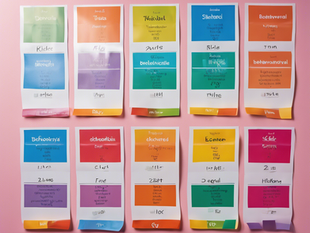

Behavior IS communication: Do you know how to listen?
Jan 17
3 min read
0
47
0
According to Dr. Albert Mehrabian and his “7-38-55 rule", approximately 93% of communication is considered nonverbal; breaking it down to 55% conveyed through body language, 38% through tone of voice, and only 7% through spoken words. Considering these percentages, the words that flow from our face seem to have little meaning without the remaining 93% backing them up. In other words, all too often we rely on the “words” that are spoken and fail to attune to the nonverbal components of communication.

If, as a society, we are relying heavily on the spoken words, this would explain why we show up in such a disconnected, assumptive, and frankly confusing way. Could you imagine what it would be like to have someone one communicates to you with a higher acknowledgement of the nonverbal components of communication? Maybe for some this is easy to imagine, while most of us, this may seem foreign. Knowing this information should challenge everyone to show up a little differently to our next communication exchange, but how?
First, we need to understand a few basic things about how behavior IS communication:
Every person has a unique way of experiencing the world – based on biology, nervous system that has been influenced by life experiences, neuroprocessing (the way we think), and trauma(s). This one thing should cause significant pause – this literally means there is no other human who shares your exact story or experience. Too frequently we assume others are thinking or seeing perspectives similar or exactly as we do, rarely do we check-in and ask, how it might be different.
The more we know about ourselves, the better we become at reading other people’s nonverbal communication. If a person spends time self-reflecting and attuning (connecting) with their nervous system and how it responds to the world around them, they become more aware of the little triggers or things that cause disruption or agitation. This attunement helps us understand we are likely showing up to different situations/conversations in a variety of ways – without the self-reflection, we assume the “challenge or difference” is because of the other person, not our nervous system or processing.
Sometimes we are triggered – heartrate change, blood pressure increase, muscle tension, and so on – and this causes anxiety or agitation. Most often there are subtle things that occur throughout our day that contribute to this, rarely do we slow down to check in and see where we are, instead we forge forward and show up (unintentionally) with agitation and wonder way that conversation went sideways. And even more rarely, do we reflect and consider our part, instead we look for elements to justify our judgment/bias of that person and how they must have been this way or that. Likewise, we have interactions with folks who have had a bad day, and our experience includes their agitations, that had nothing to do with us.
Curiosity leads to mindful engagement and a significant reduction in assumptions, which often rely heavily on the “words” exchanged in a conversation. The tone of voice, body language and overall “sense” we feel while interacting with another person becomes less about me, or rather, how it is making me feel and instead helps us see that the person is likely going through something(s) beyond this exchange and has nothing to do with me, so why take it personal, why become reactive. Instead, ask something like… “is there anything I can do to support you?” – “Do you need a minute?”
The world might become a better place if each of us started practicing these basic things. And in the world of intellectual and developmental disabilities, having this mindset is critical to be a successful support person – those we support need us to know we are confident in who we are, what we can do, and will keep them safe when they are not able to, or they are having a rough day.





